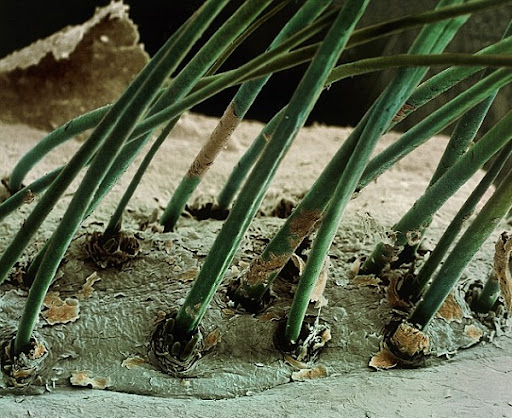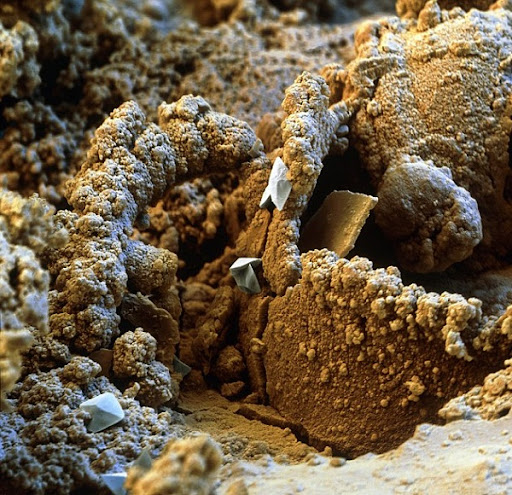There's a new book out, 'Microcosmos: Discovering The World Through Microscopic Images'. It looks really interesting. The Daily Mail reports:
Microcosmos takes readers into a secret world of extreme close-ups. Some subjects have been magnified by as much as 22 million times.
Detailed descriptions of the subjects are contained within.Magnified 22 million times, this microscopic photo is of household dust
containing long hairs such as cat fur, twisted synthetic and woollen fibres,
a pollen grain, plant, serrated insect scales and insect remains.
. . .
Compiled by London-based science author Brandon Broll, Microcosmos takes a piercing look at the everyday in six sections including Zoology, The Human Body and Botanics.
Taken by over 30 'microscopists' using a variety of powerful microscopes, the book charters a voyage through a miniature world showing the unlikeliest parts of our lives in minuscule detail.Eyelash hairs, magnified 50 times
Readers can view extreme close-ups of items including ladies' tights, the surface of the human tongue and the beautiful scales on butterfly wings.
Also included in this weird and wonderful selection of images are a rusty nail and cut human hair on a razor blade.The corroded surface of a rusty metal nail, magnified 600 times
The spectacular visuals were captured using a variety of traditional light-based microscopes, powerful scanning electron microscopes which bombard the subject with electrons and build the image using a computer and transmission electro microscopes.
South African Broll, who specialises in science and health writing, said: 'The book will show readers the beauty of what is too small to see with the naked eye.'
There's more at the link, including many more photographs (all larger than the three I've reproduced here as examples).
I think this book goes on my 'Must Read' list.
Peter



2 comments:
Years ago, I bought my wife a book by the same title. I wonder if this is a new edition? The Amazon link doesn't seem to say so.
That first photo is mislabeled, though. This is much lower than 20 million times mag.
I agree with Graybeard. There is no way that pollen grain or the fibers which seem to be legitimately natural hair are magnified that much.
22 million times magnification would have to be scanning electron microscope and there is no color resolution at that magnification anyway. My guess would be closer to 2,200x magnification.
Post a Comment